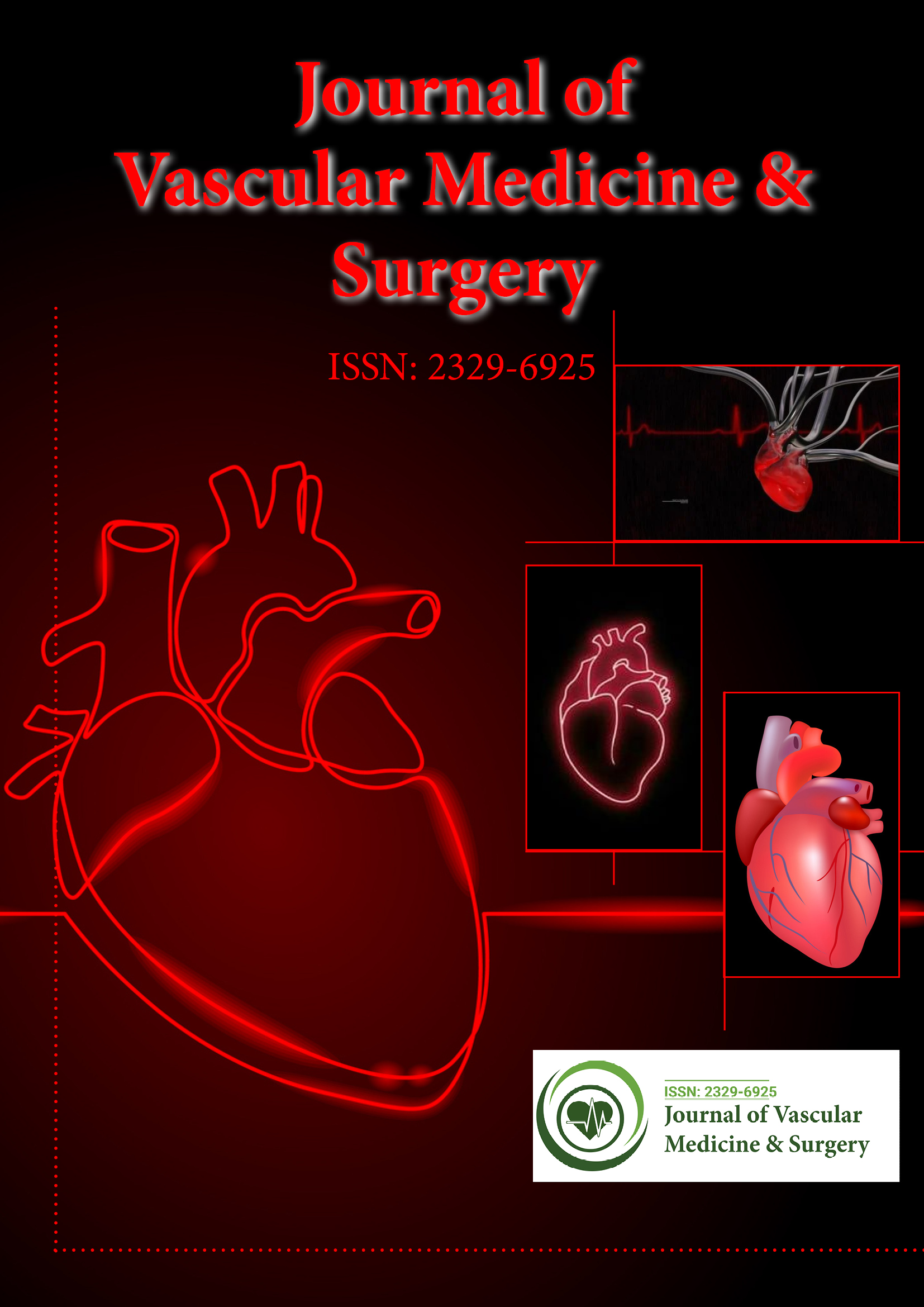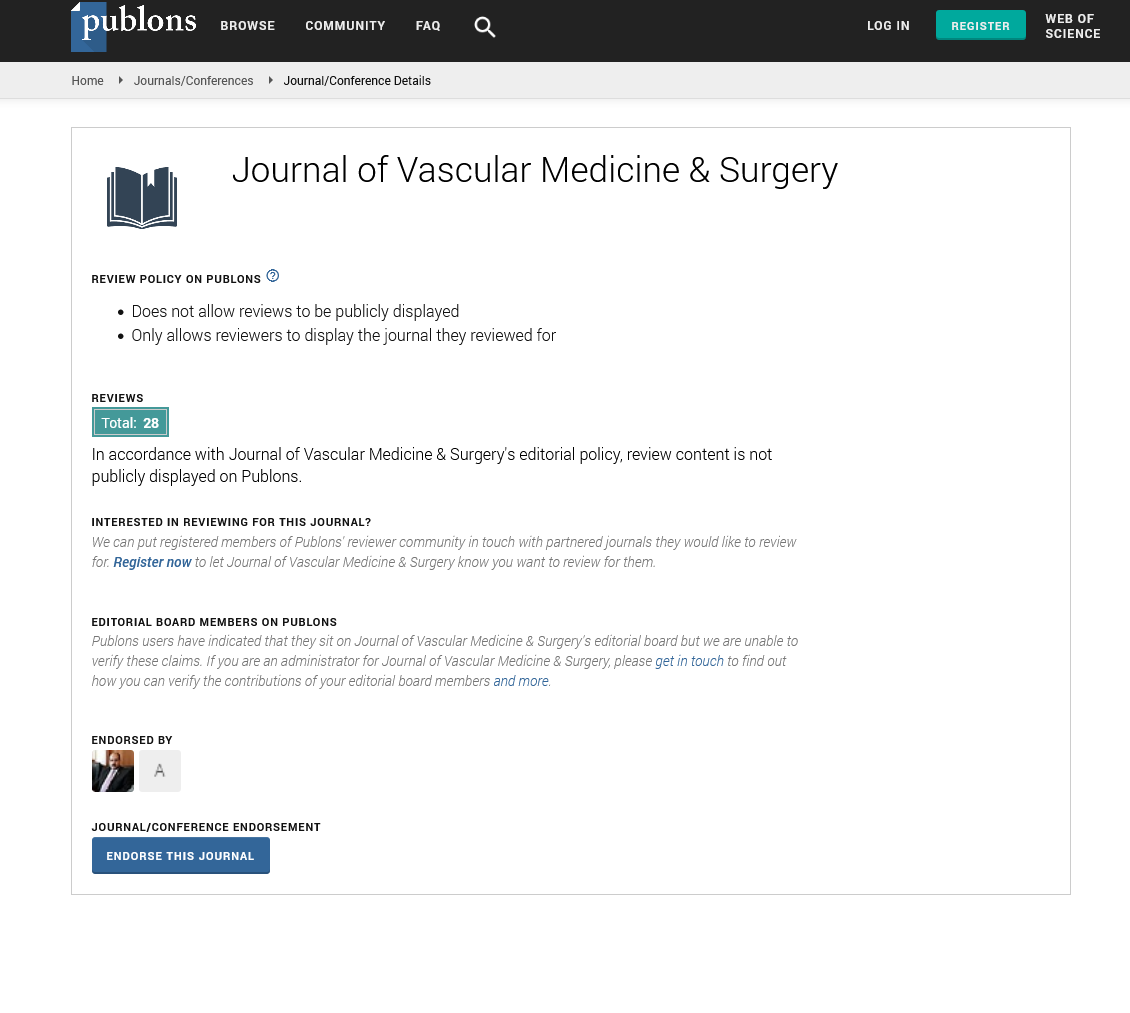Indexed In
- Open J Gate
- Academic Keys
- RefSeek
- Hamdard University
- EBSCO A-Z
- OCLC- WorldCat
- Publons
- Euro Pub
- Google Scholar
- SHERPA ROMEO
Useful Links
Share This Page
Journal Flyer

Open Access Journals
- Agri and Aquaculture
- Biochemistry
- Bioinformatics & Systems Biology
- Business & Management
- Chemistry
- Clinical Sciences
- Engineering
- Food & Nutrition
- General Science
- Genetics & Molecular Biology
- Immunology & Microbiology
- Medical Sciences
- Neuroscience & Psychology
- Nursing & Health Care
- Pharmaceutical Sciences
Short Communication - (2025) Volume 13, Issue 6
Impact of Smoking Cessation and Public Health Policies on Cardiovascular Disease Mortality Rates
Thomas Walker*Received: 23-May-2025, Manuscript No. JVMS-25-29458 ; Editor assigned: 26-May-2025, Pre QC No. JVMS-25-29458 (PQ); Reviewed: 09-Jun-2925, QC No. JVMS-25-29458 ; Revised: 16-Jun-2025, Manuscript No. JVMS-25-29458 (R); Published: 23-Jun-2025, DOI: 10.35248/2329-6925.25.13.605
Description
Cardio Vascular Disease (CVD) remains the leading cause of death globally, responsible for more than 18 million deaths each year. Despite major advancements in medical treatment, prevention stands out as the most effective and sustainable way to address this growing health crisis. Embracing a "Heart Smart" lifestyle highlights the importance of being informed, recognizing early warning signs and consistently applying both lifestyle and medical strategies to protect heart health.
CVD includes a wide range of conditions such as coronary artery disease, high blood pressure, heart failure, stroke and irregular heart rhythms. Many of these issues develop silently, with no noticeable symptoms in their early stages making regular check-ups and screenings essential. Key early risk indicators include high blood pressure, abnormal cholesterol levels, elevated blood sugar and increased body weight. Left untreated, these factors can lead to serious events like heart attacks or strokes.
Understanding the risk: The hidden progression of heart disease
High blood pressure, often called the "silent killer," can damage blood vessels without obvious signs. Detecting and treating it early is critical. Public health initiatives and awareness campaigns have played a significant role in improving diagnosis and encouraging people to stick with treatment. Likewise, managing conditions like type 2 diabetes and high cholesterol—both major modifiable risk factors—has been shown to dramatically lower the chances of cardiovascular events [1–5].
Diet is a fundamental part of heart disease prevention. Eating patterns like the Mediterranean and DASH diets, which emphasize fruits, vegetables, whole grains, lean proteins and healthy fats, have consistently been linked to reduced heart risk. Cutting down on sodium, added sugars and trans fats also helps. A key study found that following the Mediterranean diet led to a 30% reduction in cardiovascular events among people at high risk.
Physical activity is another pillar of prevention. The World Health Organization recommends a minimum of 150 minutes of moderate-intensity aerobic exercise weekly. Regular movement improves blood vessel function, lowers inflammation and helps manage cholesterol levels. A large review of studies found a clear, dose-related drop in coronary heart disease risk with increasing physical activity levels.
Tobacco use is still a major contributor to CVD deaths worldwide. Quitting smoking even after years of use has immediate and long-term heart health benefits. Government policies like cigarette taxes, advertising bans and public smoking restrictions have successfully reduced smoking rates. When combined with medications and behavioral counseling, smoking cessation programs significantly improve cardiovascular outcomes.
Building a heart-smart society: Prevention, innovation and equity
Medications are an important tool, especially for people with elevated heart risk. Statins help control cholesterol and slow the buildup of arterial plaque, while blood pressure medications reduce the chances of heart failure, stroke and kidney problems. Risk assessment tools like the ASCVD calculator help doctors identify patients who may benefit from these treatments.
Technological innovations are expanding how prevention is delivered. Digital tools like mobile health apps, fitness trackers and virtual healthcare platforms allow for continuous monitoring of heart rate, physical activity and blood pressure. These innovations enable individuals to play an active role in their health while giving healthcare providers timely information for early intervention.
Nonetheless, health disparities continue to limit progress. In many low-and middle-income countries, barriers such as lack of access to healthcare, medications and diagnostic tools prevent timely identification and management of risk factors. Tackling these challenges requires strong policy support, investment in healthcare infrastructure and community health programs. Tailoring public health education to different cultures and languages can also increase participation and improve outcomes.
Policy and environmental changes play a vital role in supporting heart health at the population level. Designing cities to encourage walking and physical activity, regulating the marketing of unhealthy foods and taxing sugary drinks are proven strategies to reduce risk. Introducing heart-health education in schools can help children develop lifelong healthy habits.
Ultimately, a "Heart Smart" approach combines personal responsibility with community support, clinical care and policy action. It encourages people to be proactive about their health, adopt heart-friendly habits and seek regular preventive care. Healthcare providers are key in guiding patients, while policymakers and institutions must create environments that make healthy choices easier.
Conclusion
In summary, reducing the burden of cardiovascular disease requires a comprehensive, multi-layered approach. By combining awareness, education and evidence-based strategies in both clinical and public health settings, we can make meaningful progress. Building a heart-smart society starts with the recognition that prevention is not just feasible it is essential and incredibly powerful.
References
- Naitoh MA, Burrell LM, Risvanis J, Aldred KL, Rockell MD, Johnston CI, et al. Modulation of genetic hypertension by short-term AVP V1A or V2 receptor antagonism in young SHR. Am J Physiol. 1997;272(2):F229-F234.
[CrossRef] [Google scholar] [PubMed]
- Yusuf S, Joseph P, Rangarajan S, Islam S, Mente A, Hystad P, et al. Modifiable risk factors, cardiovascular disease and mortality in 155,722 individuals from 21 countries (PURE): A prospective cohort study. Lancet. 2020;395(10226):795-808.
[CrossRef] [Google scholar] [PubMed]
- Benjamin EJ, Virani SS, Callaway CW, Chamberlain AM, Chang AR, Cheng S, et al. Heart disease and stroke statistics 2018 update: a report from the American Heart Association. Circulation. 2018;137(12):e67-e492.
[CrossRef] [Google scholar] [PubMed]
- Stone NJ, Lloyd-Jones DM, Miedema MD, Collins BL, Sperling LS, Blumenthal RS, et al. 2019 ACC/AHA guideline on the primary prevention of cardiovascular disease. Circulation. 2019;140(11):e596-e646.
- Cannon CP, Blazing MA, Giugliano RP, McCagg A, White JA, Theroux P, et al. Ezetimibe added to statin therapy after acute coronary syndromes. N Engl J Med. 2015;372(25):2387-2397.
[CrossRef] [Google scholar] [PubMed]
Citation: Walker T (2025). Impact of Smoking Cessation and Public Health Policies on Cardiovascular Disease Mortality Rates. J Vasc Surg. 13: 605.
Copyright: © 2025 Walker T. This is an open-access article distributed under the terms of the Creative Commons Attribution License, which permits unrestricted use, distribution and reproduction in any medium, provided the original author and source are credited.

